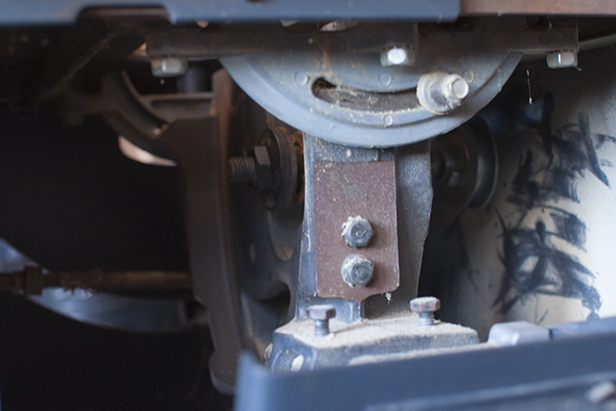
The splitter packaged with most table saws also includes a set of spring-loaded pawls that prevent the work piece from being thrown or pushed back towards the operator. Internal stress of wood can cause the workpiece to bind the blade following a rip cut and therefore the spitter will prevent that from happening.

It's so the tooth profiles don't press on one another, which would bend your blades, make it possible for said nut to loosen and give you a good chance of ballistic carbide, to boot. If your arbor nut is that loose you have other, much bigger concerns. Which, by the by, isn't so the blades "won't spin into each other". Just stagger the teeth so the blade isn't bent when you crank home your arbor nut. If it were me, I'd limit myself to TWO stacked blades (that aren't designed for the purpose), so each has at least one lateral plane available to it for ejecta, unless it's something trivial like a bunch of finger joints. But "ripping a 1-1/2-inch dado lengthways in a 16-foot FPS* 2x4"? If you're really lucky you'll only knock yourself out. If you're making 1/2" box or finger joint cuts through the face of panel material on a sled? Knock yourself out! As many as the arbor will hold! Maybe 1/4 of the teeth will engage before you're done anyway. Species, moisture content, grain, ambient humidity, lunar cycle, mother's maiden name, along with the ever-critical "is my lumber just going to be a dick about this?" no doubt all play a role. I'm just talking theory (if you wanna call the engineering design considerations "theory") here. Now, don't take this as me preaching doom and gloom. Like, the "orbital escape velocity" flavor. And with that many teeth taking a deep bite simultaneously, any hiccup is begging for kickback.

All those middle blades take a bite, and can't shed the waste from any direction but straight OUT vertically (vs vertically and sideways). Go faster? And you just hit on the concern I'd have, after the torque considerations, of course: the blade(s) binding. Same reason rip blades have deep gullets and fewer teeth: fast, hack and slash removal, deep, wide disposal. That's why he have chip-breakers in dado stacks: they also serve to even out the cut, sure, but even more critically, they provide a place for all the excess sawdust to GO, and a spinning "arm" to help ensure it DOES. The more volume of wood being cut, then more waste material/sawdust there is that needs removing, QED. The other one, as briefly touched upon by the OP, is chip clearance. Especially when they're tearing through a substance as chewy as wood.

It DOES take significantly more energy to move that many large blades. It is dangerous for two reasons: first, as stated, torque. I know I'm really late to the party on this guys, but since I only heard half of the answer, I want to toss in.


 0 kommentar(er)
0 kommentar(er)
